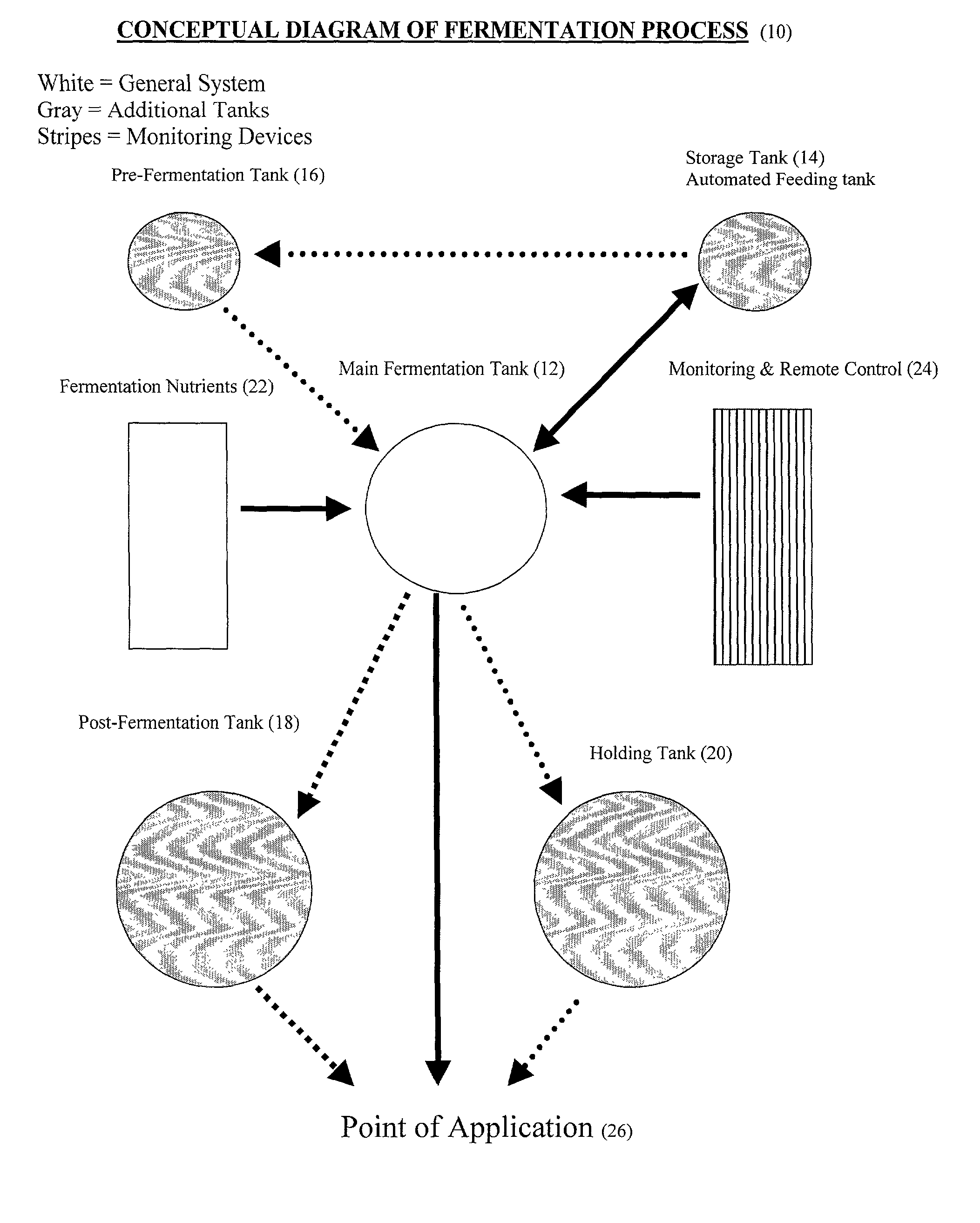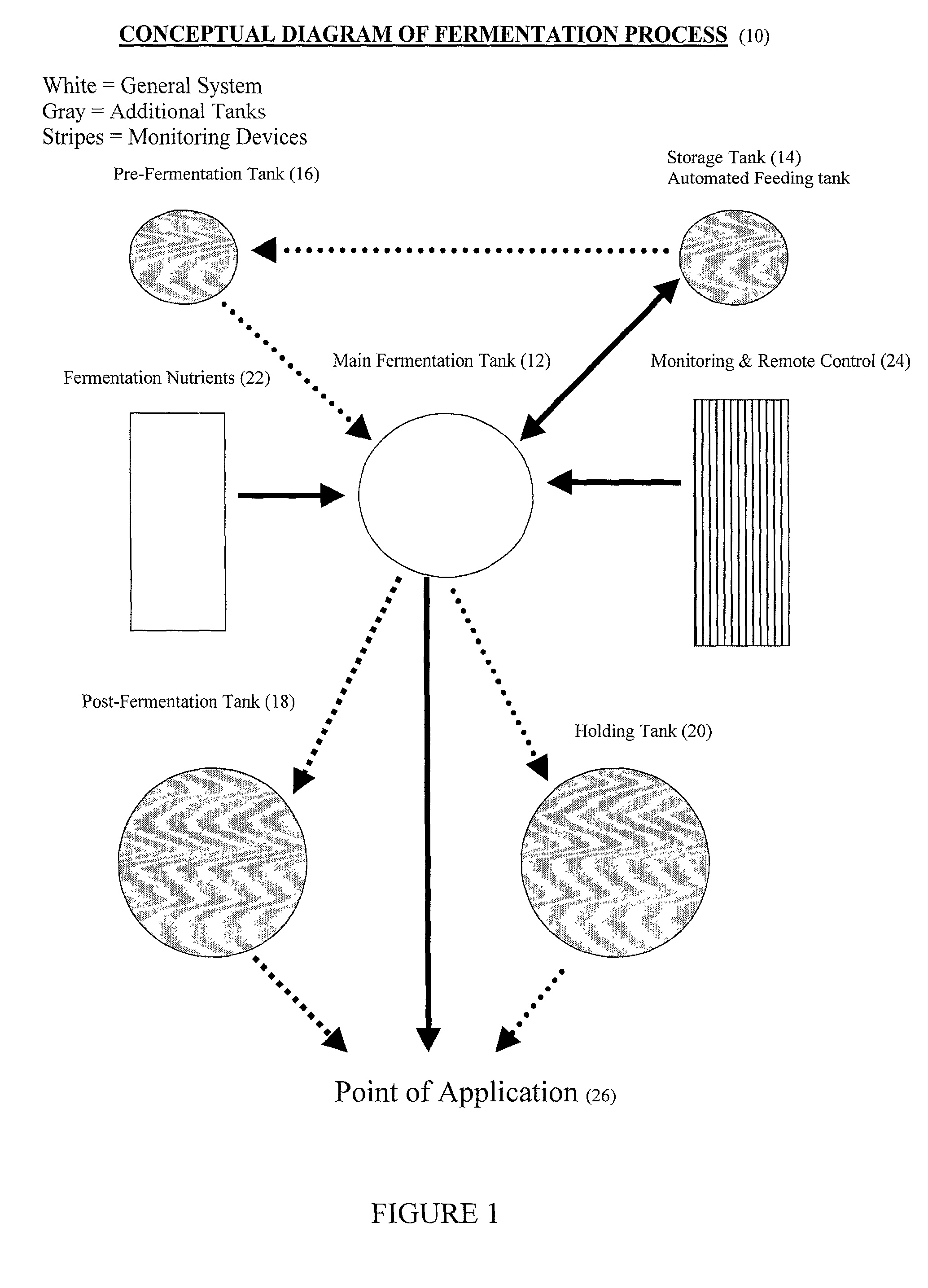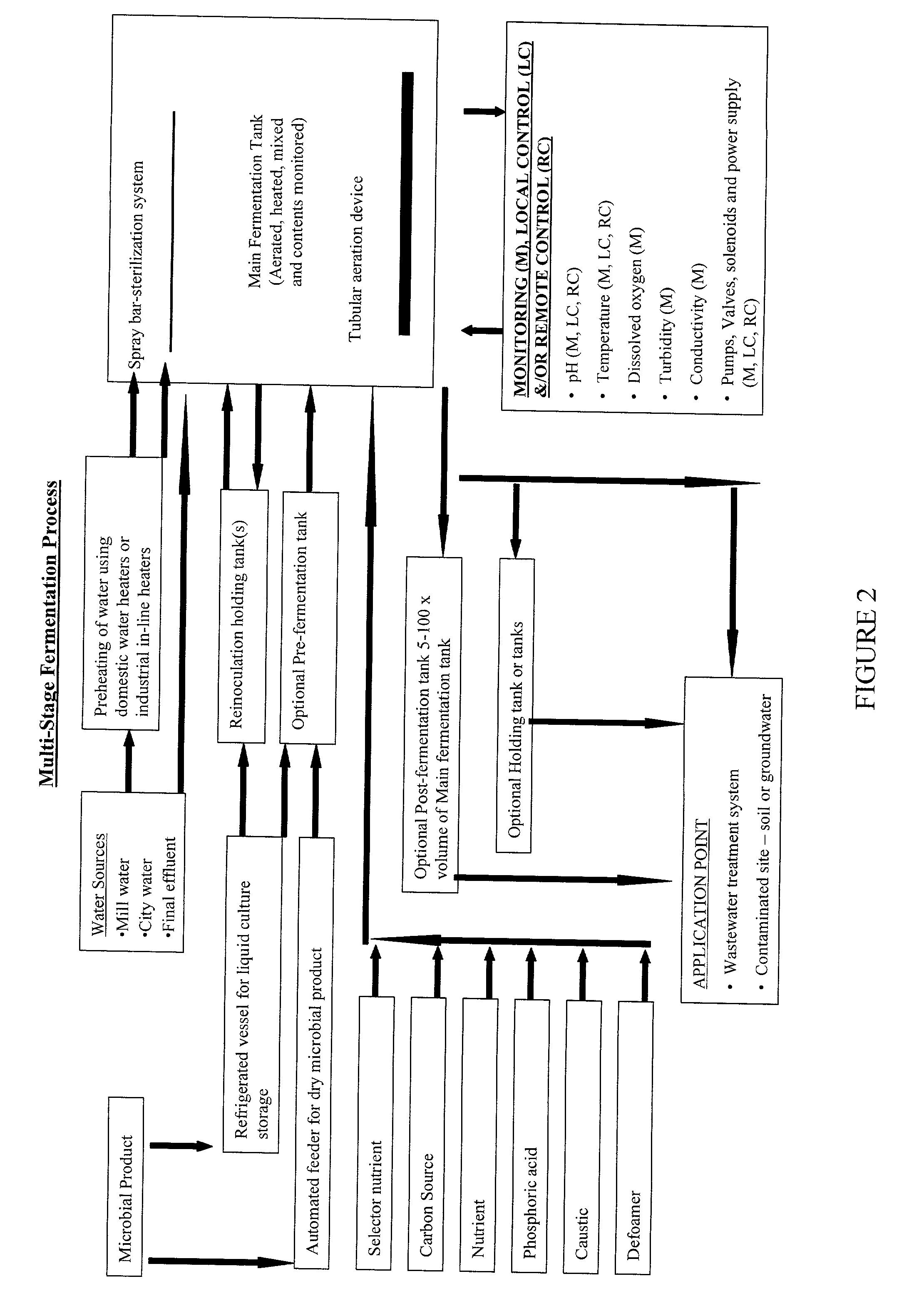Fermentation systems, methods, and apparatus
a technology of fermentation system and equipment, applied in the field of equipment, methods, and applications for treating wastewater, can solve the problems of high loss, process killing in excess of 90% of the microorganisms, and non-target microorganisms becoming a significant part of the final produ
- Summary
- Abstract
- Description
- Claims
- Application Information
AI Technical Summary
Benefits of technology
Problems solved by technology
Method used
Image
Examples
example 1
Large Scale System in General
[0079] One aspect of the current invention is the inoculation at the application point with about 10-100 times more of the target microbes than conventional technology. With this in mind, the dosage at the point of application is optimally at least about 10.sup.4 cfu / mL. Based on this goal, the working volume of the main fermentation tank is optimally about {fraction (1 / 500)} to {fraction (1 / 50,000)} of the flow to be treated, while the post fermentation tank is about 2-100 times larger in working volume, and the pre-fermentation tank is about 50-500 lesser in working volume. The microbial inoculum can be about {fraction (1 / 100)} to {fraction (1 / 1000)} of the first tank used whether that is the pre-fermentation tank or the main fermentation tank. For example, for a 30 day supply of inoculum for a 40 MGD plant with a pre-fermentation tank, the inoculum required to be stored would be 1.2 gallons, or 5 gallons would last for about 3 months without replaceme...
example 2
System for Single Pass Lagoon System
[0095] In a single pass lagoon system, the influent is first directed to a primary clarifier in which solids are allowed to settle. Then the wastewater is passed through an aerated lagoon, and then into a settling pond, before discharge. In the single pass system, there is a continuous flow of wastewater, and therefore, continuous treatment is desired so that each part of the waste steam is treated.
[0096] In a plant with a 14 MGD flow, a single pass lagoon system is inoculated from a 1000 gallon tank containing a concentration of 1.4.times.10.sup.9 cfu / ml microorganisms. The initial concentration of microorganisms in the inoculated 4 million gallon aeration tank is 10.sup.5 cfu / ml. Typically 10.sup.5 to 10.sup.7 cfu / ml microorganisms can be recovered from a single pass lagoon. The inoculum is therefore sufficient to obtain almost immediate treatment. If the lagoon has a 3 day design residence time and the inoculum is added to the waste stream at t...
example 3
System for Activated Sludge System
[0101] In an activated sludge system, the influent is delivered to a primary clarifier in which solids are allowed to settle. The wastewater then passes to an aerated basin, and then to a secondary clarifier where sludge is recycled to pass through the aerated basin again. Due to the recycling in the activated sludge system, a holding tank is not necessary, although it may be desired as a back up.
[0102] In a typical activated sludge system, it may take 14 to 30 days to see an effect of bioaugmentation due to the low rates of inoculation of microbes. Using the multistage fermentation system of the present invention, an effect is seen in approximately 5 days. In a small plant (smaller wastewater flow) with a large fermentation tank, allowing a larger inoculum, an effect is seen in as little as 24 to 48 hours.
[0103] For example, a plant with an activated sludge system to treat its wastewater is treated using the fermentation system of the present inven...
PUM
| Property | Measurement | Unit |
|---|---|---|
| temperature | aaaaa | aaaaa |
| time | aaaaa | aaaaa |
| temperature | aaaaa | aaaaa |
Abstract
Description
Claims
Application Information
 Login to View More
Login to View More - R&D
- Intellectual Property
- Life Sciences
- Materials
- Tech Scout
- Unparalleled Data Quality
- Higher Quality Content
- 60% Fewer Hallucinations
Browse by: Latest US Patents, China's latest patents, Technical Efficacy Thesaurus, Application Domain, Technology Topic, Popular Technical Reports.
© 2025 PatSnap. All rights reserved.Legal|Privacy policy|Modern Slavery Act Transparency Statement|Sitemap|About US| Contact US: help@patsnap.com



